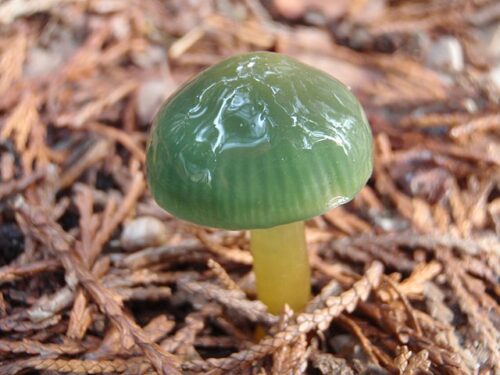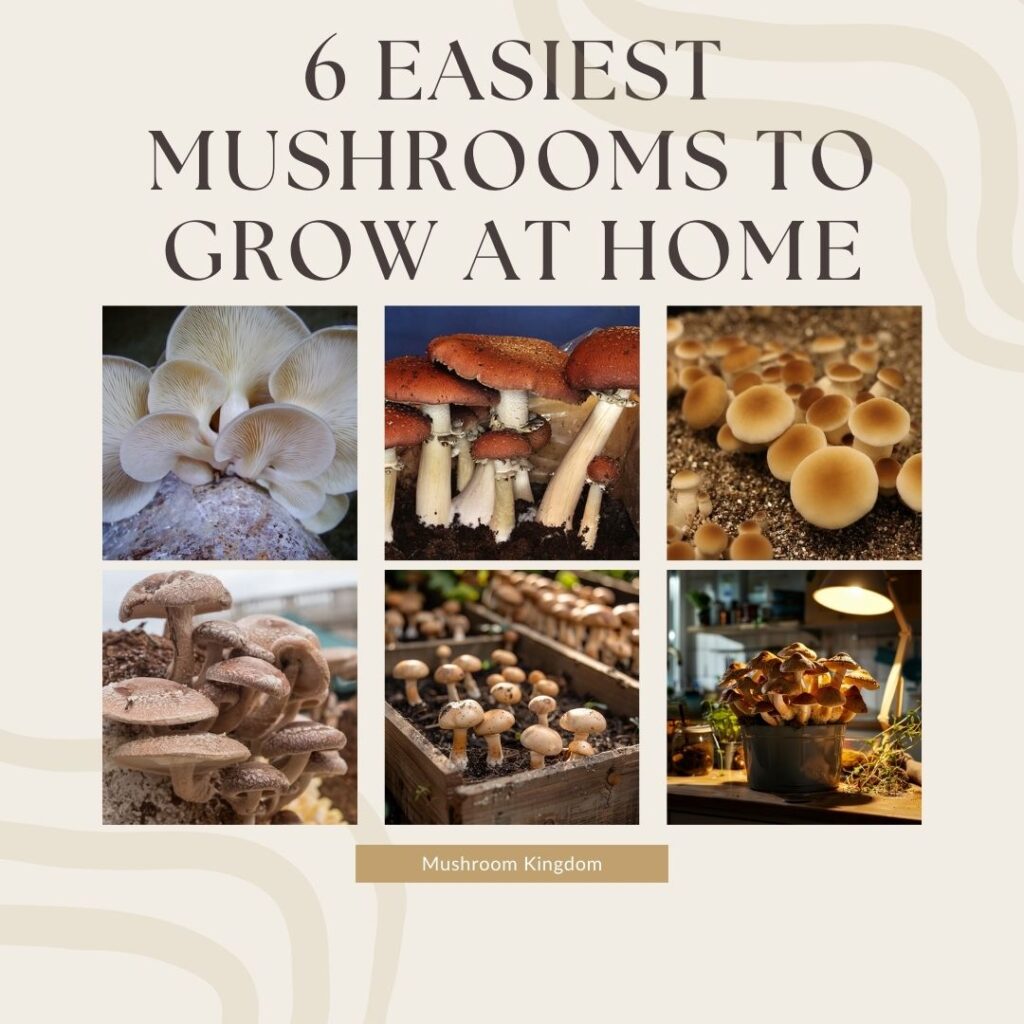The Parrot Waxcap (Hygrocybe psittacina) is a small, brightly colored mushroom commonly found in unimproved grasslands and meadows.
Recognizable by its distinctive green, yellow, and sometimes orange hues, it has a slimy cap and stems.
Let’s further explore this fascinating beauty.
How To Identify Parrot Waxcap Mushroom?
Identifying a Parrot Waxcap (Hygrocybe psittacina) mushroom involves examining several key characteristics. Here are the steps and features to look for:

- Cap
The cap is typically bright green when young, but it can fade to yellow or even orange as it ages. It starts as convex and then becomes more flat or even slightly depressed in the centre as it matures. The surface is slimy or sticky when moist.
- Gills
Initially pale green or yellow, often with a greenish tinge, becoming more yellow or orange with age. The gills are adnate to slightly decurrent (attached to and running slightly down the stem).
- Stem (Stipe)
The colour is green, often with a yellowish base. However, the green colour can sometimes be more intense near the top of the stem. The texture is slimy or sticky, similar to the cap while the shape is cylindrical, sometimes slightly tapering towards the base.
- Flesh
Pale green to yellow while the consistency is waxy and brittle.
- Spore Print
To obtain a spore print, place the cap gills down on a piece of white paper and cover it with a bowl. Leave it for several hours to overnight. Cap Diameter ranges from 1 to 4 cm while the stem length is usually between 2 to 8 cm.
Where To Find Parrot Waxcap Mushroom?
Parrot Waxcap mushroom is commonly found in unimproved grasslands, meadows, and pastures. It typically appears in late summer to autumn (fall).
Habitat
- Unimproved Grasslands: These are grasslands that have not been intensively fertilized or plowed, maintaining a natural, nutrient-poor condition. This type of habitat is often rich in diverse fungi, including waxcaps.
- Meadows and Pastures: Parrot Waxcaps are commonly found in meadows and pastures, especially those that are well-drained and have a short sward due to grazing.
- Mossy Areas — The presence of moss is a good indicator of suitable conditions, as Parrot Waxcaps often grow among mosses.
- Heathlands and Moors — These areas provide a similar nutrient-poor, acidic environment conducive to waxcap growth.
Soil and Climate Conditions
- Soil: They prefer well-drained, often slightly acidic soils. They are more common in areas where the soil is low in nutrients and organic matter.
- Climate: They thrive in temperate regions and are typically found in environments with a cool, damp climate. They appear in late summer to autumn (fall), coinciding with periods of higher moisture.
Geographic Distribution
Parrot Waxcaps are widespread across Europe, including the UK, Ireland, and other temperate regions. They are particularly common in the northern and western parts where suitable grassland habitats are more prevalent.
You can also find them in similar habitats in parts of North America, including the United States and Canada, particularly in regions that replicate the cool, damp conditions of their European habitats.
While primarily noted in Europe and North America, Parrot Waxcaps are also present in other temperate regions worldwide where suitable conditions exist.
Important Considerations
- Variability: The color can be quite variable, especially as the mushroom ages or dries out. Look for the characteristic green color, which is usually present at some stage of development.
- Other Species: There are other greenish waxcap species, so take care to note the combination of features (cap, gills, stem, habitat) to avoid confusion.
Always exercise caution when identifying mushrooms. If you are not absolutely certain about a mushroom’s identity, it is best not to consume it. Consulting with local mycological societies or using detailed field guides can also be very helpful for accurate identification.
Is Parrot Waxcap Mushroom Edible?
The Parrot Waxcap (Hygrocybe psittacina) is not edible. Here are the key reasons:
- Toxicity: While not highly toxic, it can cause gastrointestinal upset if consumed. Some sources suggest it may lead to mild stomach issues.
- Consistency and Taste: Even if safe to eat, the Parrot Waxcap has an unappealing texture and taste. The flesh is waxy and brittle, and the taste is bland or somewhat unpleasant.
- Identification Issues: Mistaking it for similar-looking mushrooms, some of which are toxic, poses a risk. Accurate identification is crucial with all wild mushrooms, and the Parrot Waxcap’s bright colors can sometimes cause confusion with other, potentially harmful species.
Appreciate the Parrot Waxcap for its aesthetic value and ecological role rather than as a food source. If foraging for edible mushrooms, focus on species well-known for their edibility and safety. Always consult an expert or reliable field guides when foraging wild mushrooms.
Is Parrot Waxcap Mushroom Psychedelic?
The Parrot Waxcap (Hygrocybe psittacina) is not psychedelic. There is no evidence to suggest that it contains any psychoactive compounds. Here are the key points:
- Lack of Psychoactive Compounds: Unlike some mushrooms that contain psychoactive substances like psilocybin, the Parrot Waxcap does not have any known compounds that produce psychedelic effects.
- Focus on Other Properties: People often appreciate Parrot Waxcaps for their bright colors and ecological roles rather than for any psychoactive potential.
- Potential Confusion: Although some mushrooms with colourful appearances can be psychoactive, the Parrot Waxcap is not one of them. It is important to correctly identify mushrooms, as mistaking one type for another can lead to health risks.
In summary, the Parrot Waxcap should not be considered psychedelic. It is best known for its distinctive coloration and its presence in natural, unimproved grasslands.


